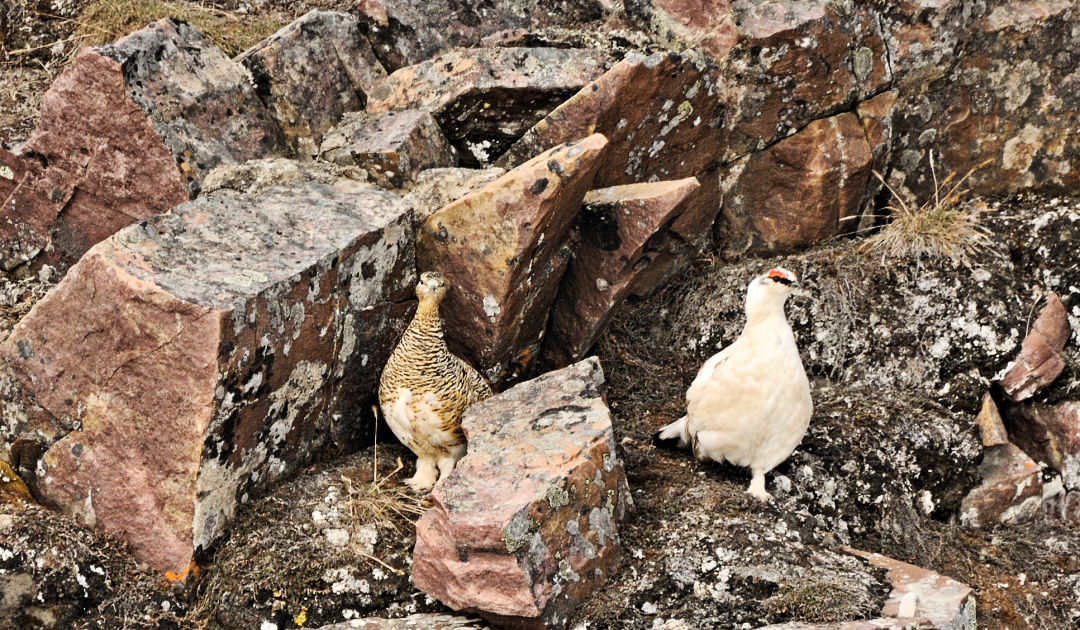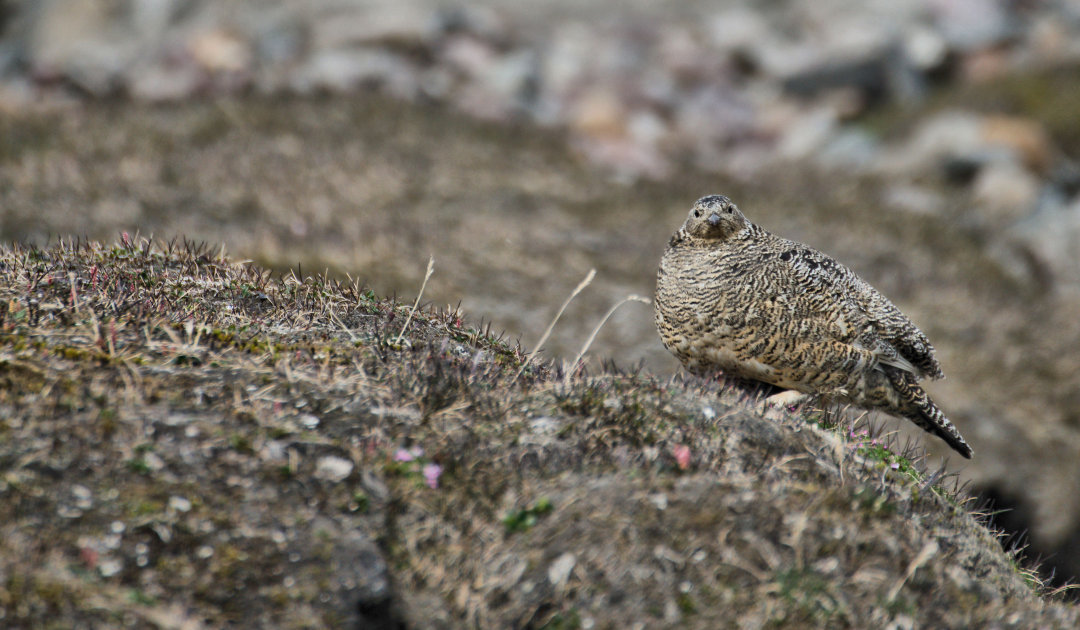
In order to live and survive in the Arctic, animal species have undergone massive adaptations. Denser fur or plumage, thicker layer of fat or an adjustment of body size are just the most obvious energy-saving measures in animals. Many other adjustments are also related to behavior and physiology. An extreme example is the rock ptarmigan on Svalbard, as researchers have now discovered. This year-round resident shuts down its immune system in winter and can save massive amounts of energy to survive the cold months. I
Scientists from the Universities of Lund (Sweden) and Tromso (Norway) came to this conclusion when they examined how the animals survived the winter time on Svalbard, which is up to five months long. “We discovered that the birds greatly reduce their energy to keep the immune system running and that the energy is used in body heat and for foraging. When the sunlight returns, the immune system rises again,” explains Andreas Nord of the University of Lund, lead author of the study. In their work, the scientists were able to show that sick ptarmigan were sick longer in winter and that less energy was invested in combating infections than in late spring. The study was published in the journal Journal of Experimental Biology.

Investing less in the immune system in winter makes perfect sense for residents of the high-arctic regions, Andreas Nord continues. “A weaker immune system is likely to be part of a series of adjustments made by Arctic animals to save energy. The risk of being affected so high in the north by various pathogens in winter is smaller than in summer, when it gets warmer again.” Because the immune system is a very energy-intensive and expensive defense system. When the body becomes infected, the energy supply is redirected to an immune response and one automatically feels weaker and more powerless. While in winter it is too cold for a large part of the pathogens, rock ptarmigans who live on Svalbard all year round, can slow down their immune system. This probably evolved in the course of evolution. In winter, the animals have to spend their energy primarily on keeping warm and looking for food, not on fighting diseases. Only in spring, when the risk of an infection increases again with the temperatures and further energy-intensive behavior such as mating, reproduction and moulting, more energy has to be invested in the immune system.

The researchers were able to show that the animals use their energy differently in winter, but the “how” is still unsolved. The scientists also warn that this adjustment will cause problems for Svalbard’s ptarmigans given the current changes in the Arctic. “If the climate changes and new migratory birds come to the Arctic earlier and leave later, this could have negative consequences for the local ptarmigans here. In addition, more and more tourists come to places where they have not been before and where the animals had been undisturbed. Such scenarios are the breeding ground for the introduction of new pathogens and are a threat to all animal species that have developed in the Arctic and where no strong immune response in winter has been necessary so far,” Nord said. With the current corona crisis, people around the world are experiencing how quickly something like this is established.

The Svalbard rock ptarmigan is a subspecies of the alpine rock ptarmigan. This species is common in large parts of the northern European tundra, the Pyrenees and the Alps. They are ground-breeders and must protect themselves from potential predators with a camouflage plumage. The cocks stay longer in the white winter plumage to distract predators from the nests. On Svalbard, these predators are polar foxes, glaucous gulls and skuas. Unlike on the mainland, however, the animals are not subject to population cycles and also form stable small populations in the long term. However, with the changes that have now also reached Svalbard, this could change. Precise figures for their population do not exist, but monitoring programs show that the density of animals in the archipelago is not very high. As a result, food competition, human disturbances, extreme weather conditions and new pathogens can decimate the population very quickly.
Source: University of Lund / Nord et al. (2020) JEB 223 (8) (2020) J Exp Biol 223 (8)
Link to the original work: https://jeb.biologists.org/content/223/8/jeb219287





